Abstract
Correlation and regression help us to understand the relation between variables and to predict patients' status in regard to a particular variable of interest. Correlation examines the strength of the relation between two variables, neither of which is considered the variable one is trying to predict (the target variable). Regression analysis examines the ability of one or more factors, called independent variables, to predict a patient's status in regard to the target or dependent variable. Independent and dependent variables may be continuous (taking a wide range of values) or binary (dichotomous, yielding yes-or-no results). Regression models can be used to construct clinical prediction rules that help to guide clinical decisions. In considering regression and correlation, clinicians should pay more attention to the magnitude of the correlation or the predictive power of the regression than to whether the relation is statistically significant.
Full text
PDF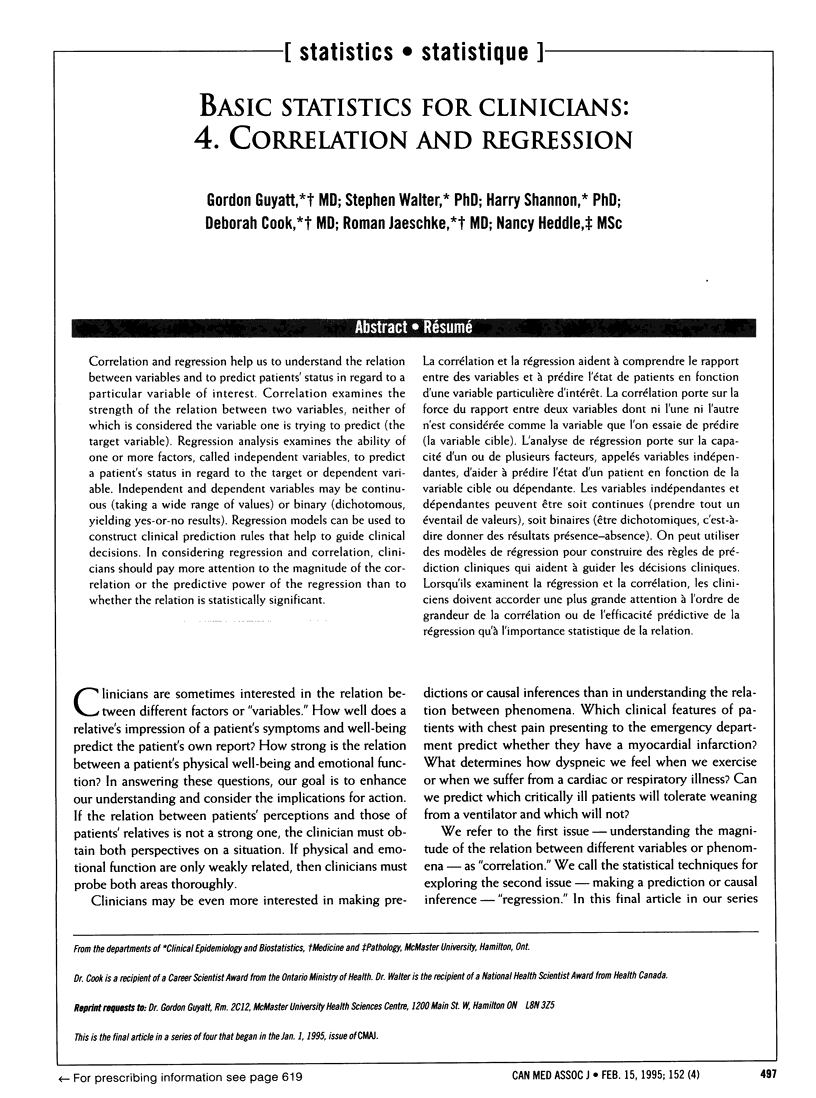
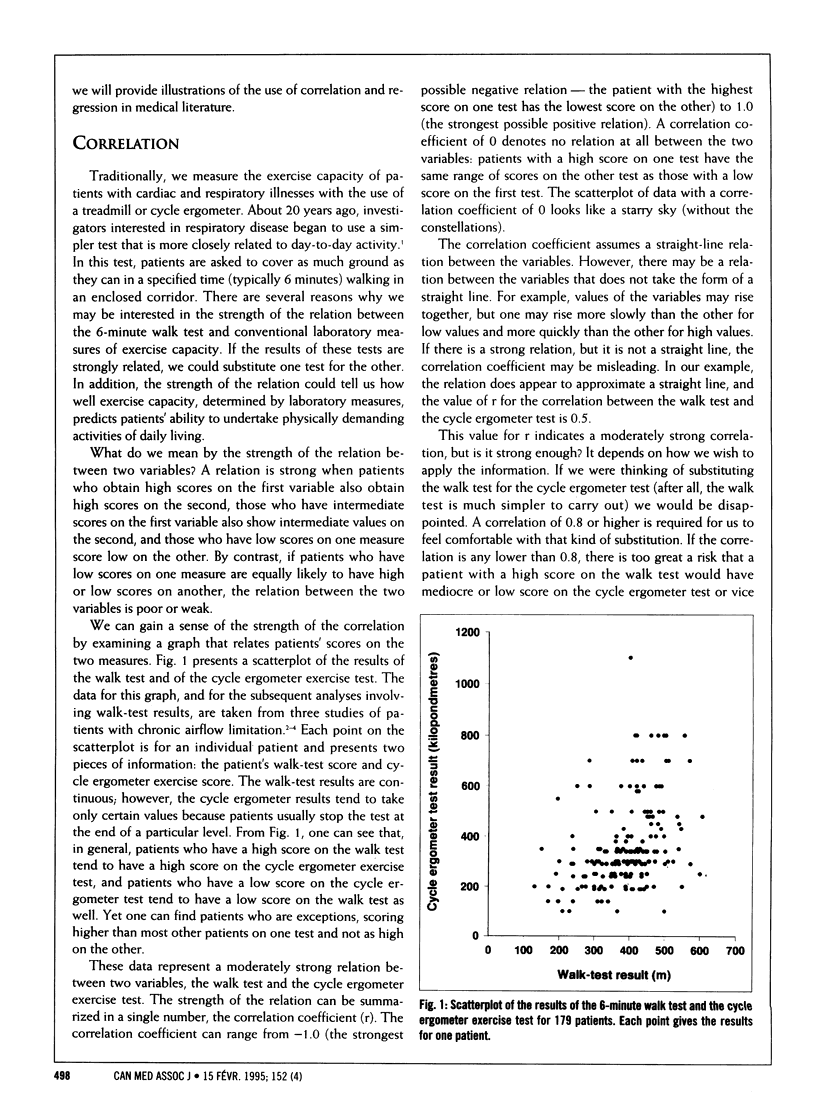

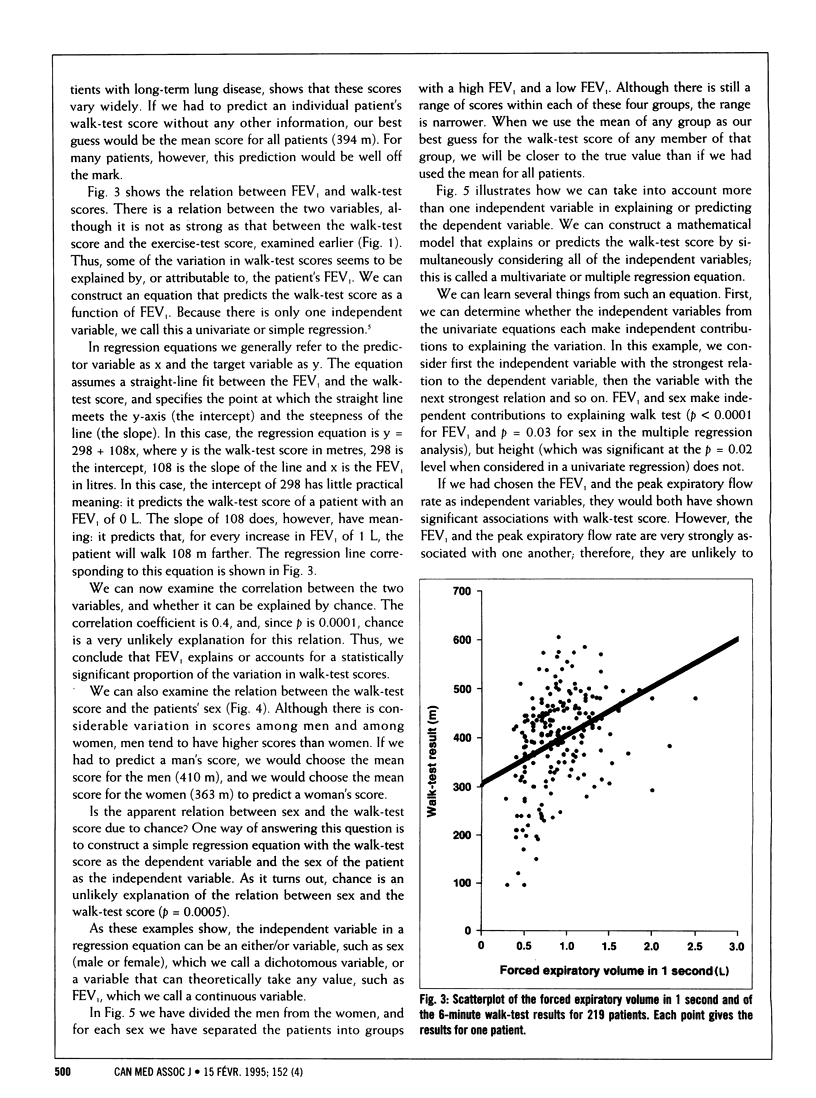
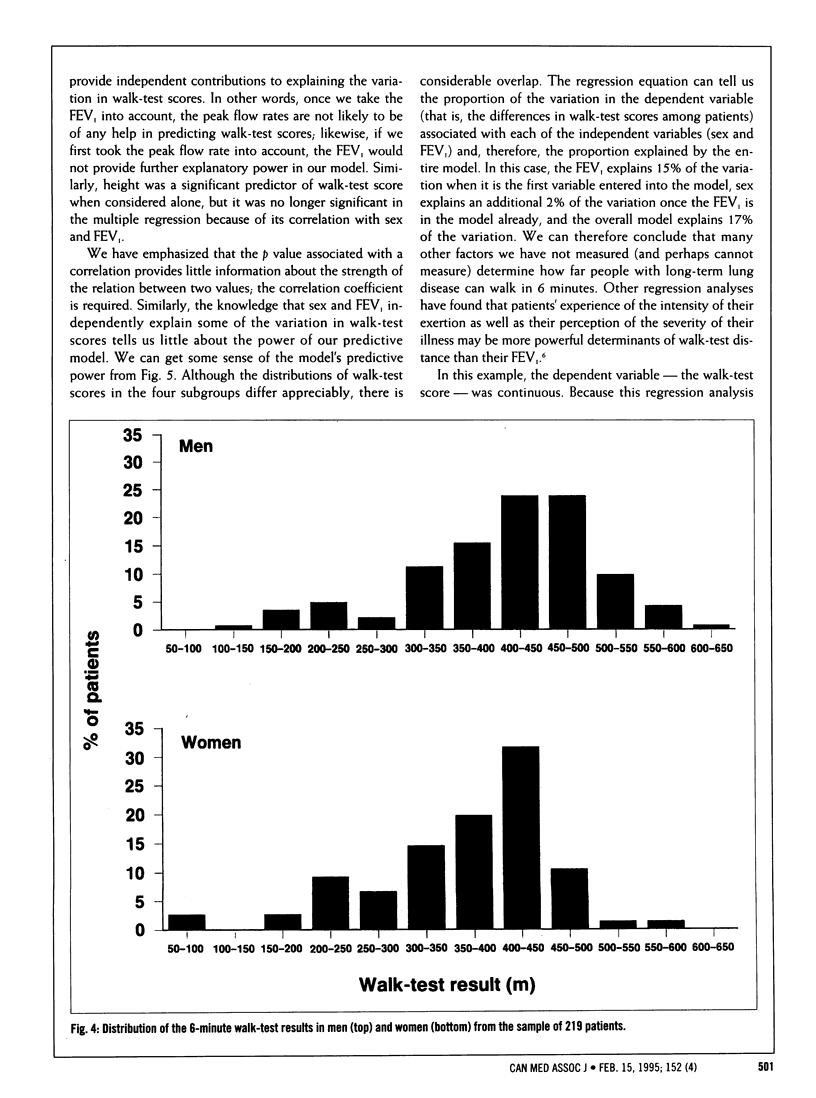
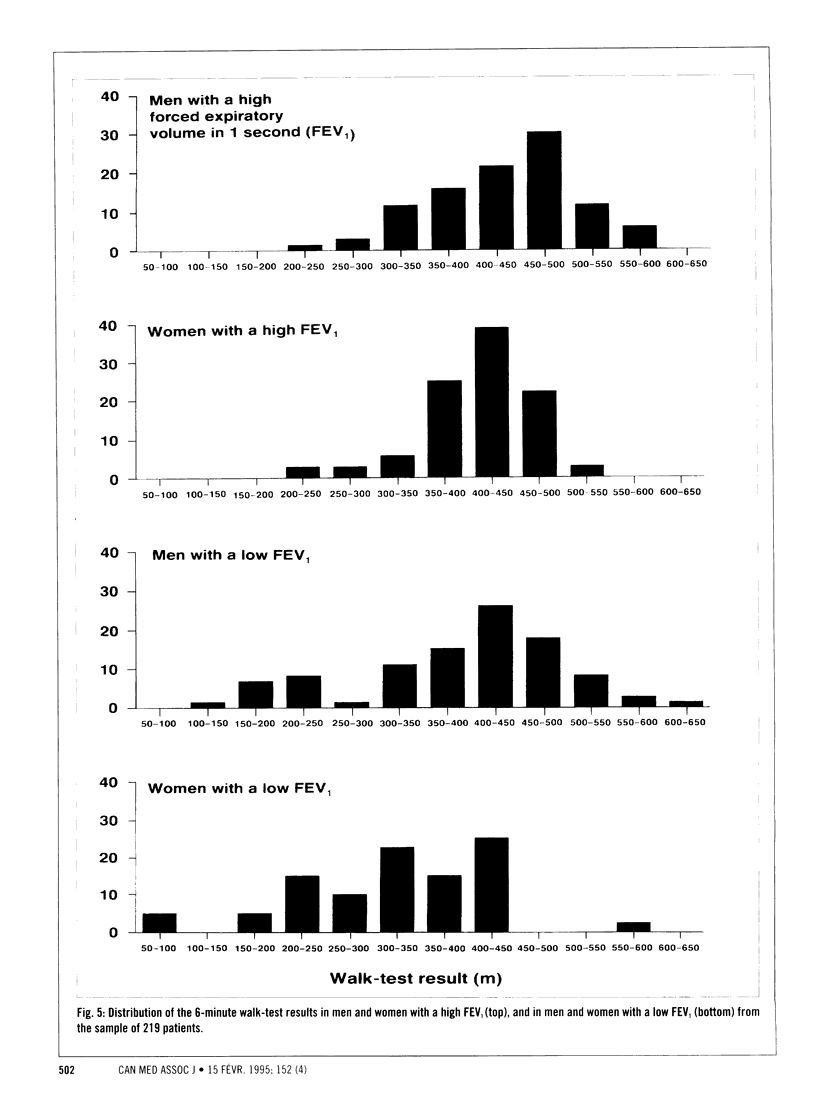
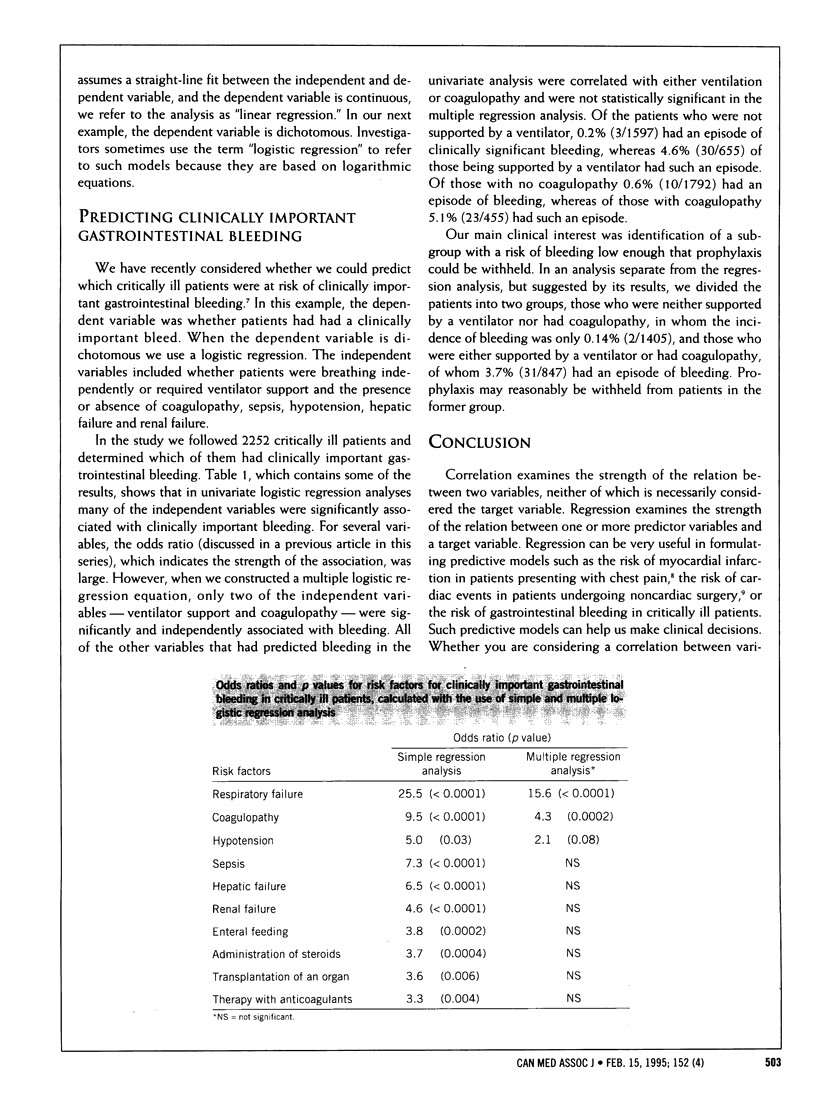
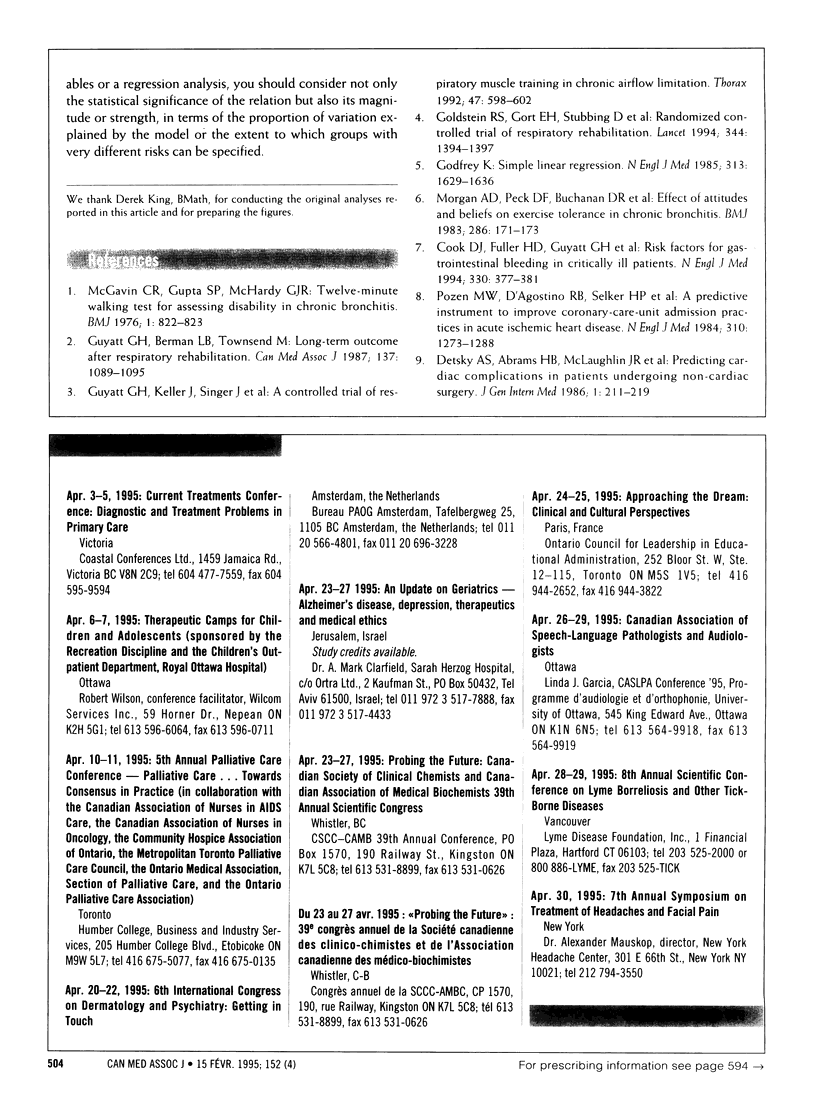
Selected References
These references are in PubMed. This may not be the complete list of references from this article.
- Cook D. J., Fuller H. D., Guyatt G. H., Marshall J. C., Leasa D., Hall R., Winton T. L., Rutledge F., Todd T. J., Roy P. Risk factors for gastrointestinal bleeding in critically ill patients. Canadian Critical Care Trials Group. N Engl J Med. 1994 Feb 10;330(6):377–381. doi: 10.1056/NEJM199402103300601. [DOI] [PubMed] [Google Scholar]
- Detsky A. S., Abrams H. B., McLaughlin J. R., Drucker D. J., Sasson Z., Johnston N., Scott J. G., Forbath N., Hilliard J. R. Predicting cardiac complications in patients undergoing non-cardiac surgery. J Gen Intern Med. 1986 Jul-Aug;1(4):211–219. doi: 10.1007/BF02596184. [DOI] [PubMed] [Google Scholar]
- Godfrey K. Simple linear regression in medical research. N Engl J Med. 1985 Dec 26;313(26):1629–1636. doi: 10.1056/NEJM198512263132604. [DOI] [PubMed] [Google Scholar]
- Goldstein R. S., Gort E. H., Stubbing D., Avendano M. A., Guyatt G. H. Randomised controlled trial of respiratory rehabilitation. Lancet. 1994 Nov 19;344(8934):1394–1397. doi: 10.1016/s0140-6736(94)90568-1. [DOI] [PubMed] [Google Scholar]
- Guyatt G. H., Berman L. B., Townsend M. Long-term outcome after respiratory rehabilitation. CMAJ. 1987 Dec 15;137(12):1089–1095. [PMC free article] [PubMed] [Google Scholar]
- Guyatt G., Keller J., Singer J., Halcrow S., Newhouse M. Controlled trial of respiratory muscle training in chronic airflow limitation. Thorax. 1992 Aug;47(8):598–602. doi: 10.1136/thx.47.8.598. [DOI] [PMC free article] [PubMed] [Google Scholar]
- McGavin C. R., Gupta S. P., McHardy G. J. Twelve-minute walking test for assessing disability in chronic bronchitis. Br Med J. 1976 Apr 3;1(6013):822–823. doi: 10.1136/bmj.1.6013.822. [DOI] [PMC free article] [PubMed] [Google Scholar]
- Morgan A. D., Peck D. F., Buchanan D. R., McHardy G. J. Effect of attitudes and beliefs on exercise tolerance in chronic bronchitis. Br Med J (Clin Res Ed) 1983 Jan 15;286(6360):171–173. doi: 10.1136/bmj.286.6360.171. [DOI] [PMC free article] [PubMed] [Google Scholar]
- Pozen M. W., D'Agostino R. B., Selker H. P., Sytkowski P. A., Hood W. B., Jr A predictive instrument to improve coronary-care-unit admission practices in acute ischemic heart disease. A prospective multicenter clinical trial. N Engl J Med. 1984 May 17;310(20):1273–1278. doi: 10.1056/NEJM198405173102001. [DOI] [PubMed] [Google Scholar]


